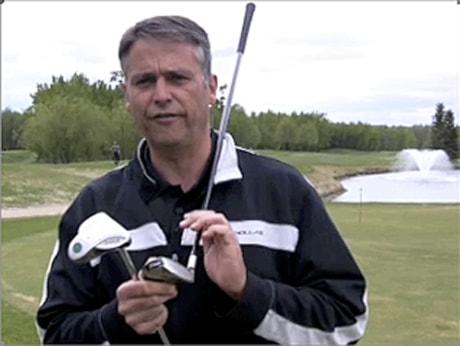If you believe you can or cannot, you are absolutely correct.
This statement is 100 per cent correct and applies not only to golf but our everyday lives. If you believe you can, you will, and if you believe you cannot, you won’t.
This is especially true in the game of golf. The mental aspect of golf makes up approximately 90 per cent of the game. This statement came directly from Canada’s own golfing legend, Mr. Moe Norman.
Many of us spend countless hours attempting to perfect our form. This is done through taking lessons on the various aspects of the game and then spending countless hours on the range or practice greens repeating what we have learned.
This practice is critical to achieving consistency as we are attempting to create a repetitious motion that is efficient and creates the results we are looking for.
Having said that, the aspect of the game that we teach and tend to practice more often is the physical side of the game. Learning and practising those physical aspects of the game is important, but at some point in time we need to put all of that practice into a game-like application. This is on the golf course.
The golf course brings a whole new set of challenges. Trees, water, sand traps and deep rough all come into play as we step onto the first tee. This, of course, now causes a player to think differently than they did on the practice tee as all these factors can directly affect the end result — your score.
Due to all of these varying factors, golfers become tense and all of their hard work and practice is overshadowed by their lack of confidence. Their minds start seeing the trouble rather than the target, and as a result their swings become different and not as fluid as they had practised.
This is especially true when it comes to the chip shot. As a general rule, golfers tend to take too big of a backswing when attempting to hit a chip shot. Doing so forces the individual to decelerate into the ball, therefore causing a shot that goes too far or not far enough.
Last week’s article was about the correct technique of hitting a chip shot.
Considered the second easiest stroke technically, the chip shot is one that is generally the hardest for many golfers to perfect. Quite often, due to a lack of confidence, players tend to send the ball sailing over the green and/or stubbing the shot and hardly moving the ball forward.
Although very frustrating, the goal is to get the ball up on the green and close to the hole so that you can one-putt and lower your score. If the chip shot is one that causes you grief, you may want to consider trying another type of chip that in some situations may make it easier to get the ball close to the hole and lower your overall score.
A chip shot is played very close to the green. The idea of a conventional chip shot is to hit the ball just high enough to carry over the longer grass and fringe, land on the green as soon as possible and roll to the hole like a putt.
Try not to land the ball on the longer grass around the green, as you never know how the ball will react. If you have difficulty executing this shot, then you may want to try using a fairway wood or a hybrid for this shot.
Many of you will want to use your putter from just off the green instead of the hybrid or fairway wood. This can easily be done, but may not be the best choice to get the ball close to the hole.
The reason for this is that the putter has very little loft on the face of the club and when making a stroke, grass will get caught between the face of the club and the ball, causing inconsistent direction and distance. Because the fairway wood and hybrid have substantially more loft, there will be less grass caught between the club and ball at impact, sending the ball out on to the green with much more accuracy and consistency.
To use one of these clubs, you want to set up to the ball as if you are in your putting stance. The ball position will be just forward of the center of your stance. Due to the length of the club you are using (hybrid or fairway wood), you will need to choke down on the club.
The stroke you use will be more like a putting stoke. The distance you want the ball to go will be determined by the size of your backswing, assuming that you swing through the same distance you swung back. Do not be afraid to experiment with alternative chip shots as this may assist you in getting the ball closer to the hole, lower your scores and ultimately increase your overall enjoyment of the day.
Scott Bergdahl is the head professional at Lakewood Golf Resort near Sylvan Lake.
